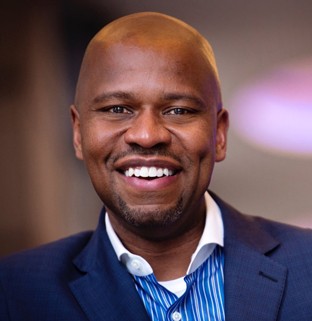Boeing’s Hunt for Efficiencies
Boeing is flying high.
The aerospace giant delivered 763 airplanes in 2017—an industry record. It also reported record revenues and record operating earnings that year. With China’s jetliner market seeing steady growth, demand is predicted to continue cruising upward in the coming years. Boeing aims to deliver 800 aircraft to customers in 2018, and 900 annually by 2020.
But success can breed problems. Boeing has struggled to keep aircraft orders on schedule, as suppliers strain to deliver engines and wing components. As unfinished planes line up outside its facilities, the Chicago-based company has rehired retired workers to pick up the pace.
Efforts to overcome production challenges go way beyond flexing its workforce, however. Boeing is digitizing its immensely complicated global supply chain—it has operations in 140 countries and all 50 U.S. states—to prevent kinks. And it is zeroing in on ways to use data to produce efficiencies on factory floors and give leaders better insights into how the century-old company can manufacture more planes more quickly than its competitors.
Ted Colbert is in charge of incorporating new IT tools and enabling more sophisticated analyses of data. Since he became CIO in 2013, Boeing has re-engineered its IT processes to support aggressive growth plans. The overhaul began with how the company uses IT in ancillary areas such as human resources and has now moved into the way IT is leveraged to engineer and design Boeing’s aircraft products.
“You have to teach everyone what the new world looks like. We’re getting much better about that as we go along.”
—Ted Colbert, CIO, Boeing
“Tech enablement plays a big role in our company’s bold vision for changing the way we fundamentally work,” Mr. Colbert says. “My role is to drive an enterprise approach to scaling up analytics and data conversion across the company for productivity and growth.”
Mr. Colbert, 44, sees his job as about more than just delivering new data-driven tools, though. If they are a drag on productivity, then they do not work right. “You can’t ever believe in yourself too much, because things keep moving around you,” Share on X he says. “Anytime someone is trying to find data or weave together data is time spent away from delivering value. So, a part of the transformation we’ve undertaken is to make data transparent where it needs to be.”
All About Efficiency
In some ways, Mr. Colbert’s entire career has been about creating efficiencies through technology. In the mid-1990s, when he was in college, AT&T Bell Laboratories enlisted him to help speed production and improve efficiency at a fiber-optic cable factory. He created software simulations of the factory floor so it could model potential changes.
“I realized then that the future was really around software and using it to drive efficiency and transparency as well as making data more available to help run businesses,” Mr. Colbert says.
After college, he headed to Ford Motor Co., working on enterprise-level IT re-engineering initiatives and eventually serving as chief of staff to the company’s CIO. From there, he moved to Citigroup, working from 2000 to 2009 mainly on enterprise IT architecture to boost efficiency in the organization.
“I was at Ford during the rough years for the auto industry, and then, at Citigroup, I was there right in the middle of the financial crisis,” he says. “When you work in industries that are having those kinds of challenges, you learn a lot about how important finding efficiencies can be.”
He has found some at Boeing, where he arrived in 2009. For example, Mr. Colbert’s team analyzed work processes among mechanics working on the company’s 787 Dreamliner. He found they were spending one-fourth of their time scouring manuals to identify the parts and tools they’d need to perform their work maintaining the aircraft. New tech tools were developed to automate that process, making the mechanics far more efficient.
Those kinds of productivity gains are the cornerstone objectives of Boeing’s transformation. Mr. Colbert believes better use of data analytics can help Boeing achieve the plan’s push for higher profit margins.
From the beginning of his time as CIO, he has tried to “democratize data” within Boeing.
That has led to some internal pushback.
“In addition to being a manufacturer of commercial jets, we’re also a big, commercial defense company,” says Mr. Colbert, whose office is at a Boeing facility in suburban Washington, D.C., just across a highway from the Pentagon. The defense sector is highly regulated, so Mr. Colbert proceeded carefully on that side of the business. “We put in someone to lead an effort on data governance for the enterprise. He’s looking to put together an approach to managing data and data ownership that will protect the data that needs protecting but also open the data that needs to be shared.”
“A big part of my job is making sure every employee in the company spends more of
their time delivering value.”—Ted Colbert, CIO, Boeing
Catalyzing Change
Still, Mr. Colbert believes that better analytics and more access to data can save the company billions of dollars. One early proof of that was when his IT team joined 13 data analytics systems into one joint Boeing AnalytX system that could examine, among other things, inventory across the company. Not surprisingly, it found opportunities to dramatically improve Boeing’s working capital.
The internal reaction was not entirely positive, Mr. Colbert says. Some in the company initially disputed the accuracy of the inventory assessments. But he anticipated some changes would not be immediately welcomed until their worth was proven. “Transparency of data across the enterprise is something that is new in a lot of ways,” Mr. Colbert says. “A lot of folks have worked in their roles for a long time, and they know how to get things done. But the knowledge is in their head. The digital world allows access to that knowledge so you can move faster.”
 One of Mr. Colbert’s signature accomplishments as CIO is a product called the Digital Flight Deck. His team partnered with the leaders of Boeing’s commercial airplanes business unit to develop a tool that simulates a range of business scenarios. The product is credited with helping Boeing better price its products and services, adding billions to the bottom line.
One of Mr. Colbert’s signature accomplishments as CIO is a product called the Digital Flight Deck. His team partnered with the leaders of Boeing’s commercial airplanes business unit to develop a tool that simulates a range of business scenarios. The product is credited with helping Boeing better price its products and services, adding billions to the bottom line.
“Our team’s job is to catalyze change,” Mr. Colbert says. “And catalyzing change within any particular business unit or function means giving them targeted tools.”
“You can’t ever believe in yourself too much, because things keep moving around you.”
—Ted Colbert, CIO, Boeing
Digital Flight Deck was developed even though Boeing was already selling record numbers of 737s and Dreamliners. This success did not imperil Mr. Colbert’s push for the new tool—to the contrary. The company’s high-flying financial performance in recent years is as much of a driver as failure might be, he says.
“It absolutely did not make anyone here complacent,” Mr. Colbert says. “The challenge is less about complacency and more about doing too much. The important thing we have to do now is to stay focused and finish the efforts we’ve started. People here will run to do the transformational work. But now it is a matter of being diligent and disciplined about delivery.”




